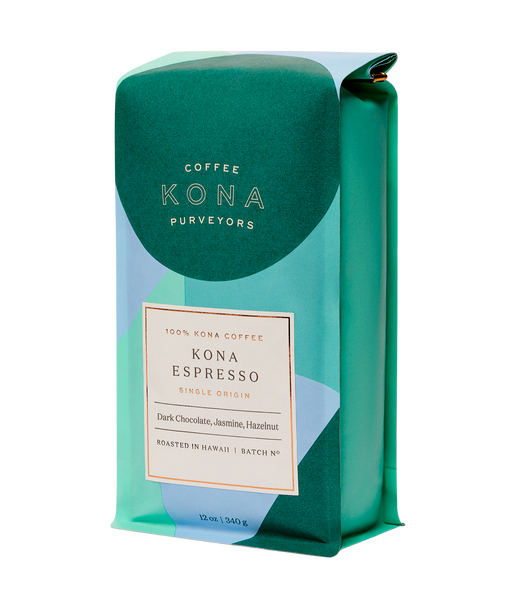How to Store SOE Single Origin Espresso for Optimal Freshness
How to Store SOE Single Origin Espresso for Optimal Freshness
Blog Article
Coffee Beans Uncovered: Discovering the Keys of Espresso and Blended Coffee Beans
When you consider coffee, what comes to mind? Is it the abundant scent of espresso or the intricacy of a well-crafted mix? Recognizing the nuances of coffee beans can change your experience. Each selection, from Arabica to Robusta, holds its own secrets. As you check out even more, you'll discover how these beans shape flavors and influence sustainability. What might you discover regarding your following cup?
The Origins of Coffee: A Historic Viewpoint
Although espresso is now a staple in coffee society worldwide, its beginnings trace back to the very early 20th century in Italy. You may be surprised to learn that the innovation of coffee was driven by a need for speed and efficiency. In 1901, Luigi Bezzera patented the initial coffee maker, intending to make coffee faster than traditional methods. This development quickly caught the attention of Italian coffee drinkers, leading to the espresso bars we know with today.
Recognizing Coffee Beans: Characteristics and ranges
When you think regarding espresso, it's vital to identify the various bean selections and their one-of-a-kind flavors. Each kind brings a distinctive character to your mug, influenced by variables like roast degrees. Recognizing these components can boost your espresso experience significantly.
Coffee Bean Varieties
As you check out the globe of coffee, you'll promptly uncover that not all beans are developed equivalent; each variety brings its very own special flavors and attributes to your mug. One of the most prominent kinds include Arabica and Robusta. Arabica beans are understood for their smooth, nuanced tastes and lower high levels of caffeine content, making them a preferred among coffee aficionados. On the other hand, Robusta beans load a more powerful punch with greater high levels of caffeine and a much more bitter taste, typically preferred in blends for their crema-enhancing qualities. You could likewise run into specialty beans like Liberica and Excelsa, which offer distinctive accounts and are much less typical. Each range offers something different, so exploring will certainly assist you locate your ideal espresso.
Flavor Profiles Discussed
Recognizing the taste profiles of various espresso beans can boost your coffee experience. Each bean variety supplies one-of-a-kind attributes that influence aroma, mouthfeel, and taste. Arabica beans usually present a sweeter, much more complicated taste with tips of fruit and floral notes, while Robusta beans tend to be bolder, with nutty and natural touches.
When you explore single-origin beans, you may discover distinct local tastes-- Main American beans may be brilliant and citrusy, whereas Italian blends commonly supply abundant, chocolatey notes.
Roast Degrees Effect
Roast degrees play an important role fit the flavor and scent of coffee beans, influencing your overall coffee experience. With light roasts, you'll find brilliant level of acidity and much more pronounced fruity notes. As you relocate to tool roasts, you'll appreciate a balanced profile that showcases sweetness and intricacy. Dark roasts, on the various other hand, frequently present abundant, vibrant tastes with a smoky coating, yet they can mask the beans' fundamental features. Understanding these roast degrees helps you pick the coffee that matches your preference choices. Trying out various roasts can result in wonderful explorations, boosting your recognition for coffee. Don't think twice to explore various roast degrees and discover your ideal cup!
The Art of Blending: What Makes Blended Coffee Special
What makes combined coffee so interesting? It's everything about the art of combining beans from various origins, roast degrees, and flavor accounts. You're not just blending; you're creating an unified balance that highlights the staminas of each bean when you blend. You can trying out numerous mixes to improve acidity, body, and sweet taste, resulting in a brew that's richer and a lot more complex than a single-origin coffee.
Mixing additionally allows you to cater to varied preference choices. You can craft a mix that's smooth and smooth or one that's bold and robust, depending upon your audience. And also, blending can help preserve uniformity, using a dependable flavor experience no matter seasonal variants in beans. So, whether you're a home or a barista brewer, understanding the art of mixing opens a globe of creativity and flavor possibilities, making your coffee experience really unique - SOE.
Flavor Accounts: Tasting Notes of Espresso vs. Blended Coffee
Mixed coffee provides a world of taste opportunities, however when it comes to espresso, you're looking at an extra focused experience. Coffee commonly showcases bold, abundant flavors with a thicker mouthfeel.
On the other hand, combined coffee offers a complicated tapestry of tastes. You can explore a range of tasting notes, from pleasant and nutty to floral and fruity. Each blend can use something distinct, often combining beans from various regions to produce a balanced profile.
While espresso supplies a strike, blended coffee welcomes you to enjoy the nuances. Whether you favor the durable stamina of espresso or the complex tastes of mixed coffee, each mug informs its own tale, waiting on you to find.
Brewing Techniques: Refining Your Coffee Shot
To attain the perfect coffee shot, recognizing the brewing techniques is essential, as also minor adjustments can significantly influence the taste and quality. Start by utilizing fresh, top quality coffee beans; grind them right before brewing for optimum taste. Aim for a great work, about the consistency of table salt, to assure optimal extraction.
Following, take notice of your water temperature; it should be in between 195 ° F to 205 ° F. Too hot or also cold can wreck your shot. Use regarding 18-20 grams of coffee for a double shot, and tamp it evenly with solid stress to develop a consistent puck.
Ultimately, control your removal time; go for 25-30 secs. A longer removal can cause bitterness, while as well short can lead to sour tastes. Exercise these techniques regularly, and you'll refine your abilities, achieving that abundant, robust coffee shot you yearn for. Enjoy the trip!
The Function of Roast Degrees in Espresso and Blended Coffee
After understanding the developing methods for coffee, it's time to ponder just how roast levels influence the flavor profile of your coffee. The roast level can dramatically alter your espresso's fragrance, preference, and body. Light roasts have a tendency to highlight the coffee's origin, offering bright level of acidity and fruity notes, while medium roasts balance level of acidity and sweet taste, developing an all-around taste. Dark roasts, on the various other hand, bring out bold, abundant tastes with lower level of acidity, frequently creating delicious chocolate or smoky touches.

Checking Out Sustainability: Honest Sourcing of Coffee Beans
When you select coffee, you're not simply selecting a flavor; you're deciding regarding the influence on farmers and the environment. Comprehending Fair Profession methods, organic farming methods, and accreditation criteria can help you sustain sustainable coffee sourcing. Allow's check out just how these factors contribute to a more ethical coffee experience.
Fair Trade Practices
Fair Trade practices play an important function in making certain that coffee beans are sourced morally and sustainably. When you pick Fair Profession coffee, you support farmers who get reasonable wages and operate in secure conditions. This commitment to ethical sourcing helps fight destitution and promotes area advancement in coffee-growing regions. You'll find that Fair Trade certification also urges eco pleasant farming methods, as manufacturers are incentivized to secure their land and sources. By deciding for Fair Trade brands, you're not just enjoying an abundant cup of coffee; you're making a positive impact on the lives of those who grow it. Your choice matters, and it attaches you to a global activity concentrated on justness and sustainability in the coffee industry.
Organic Farming Methods
As you check out the world of ethical coffee sourcing, natural farming approaches emerge as an important element of sustainability. In addition, it commonly leads to more powerful, much healthier coffee plants, resulting in richer tastes in your cup. When you opt for natural coffee, you're making a conscious option that profits both the planet and your palate.
Accreditation Standards Explained
Recognizing certification requirements is necessary for any person curious about fairly sourced coffee. These requirements, such as Fair Profession, Rain Forest Alliance, and USDA Organic, guarantee that coffee is expanded under sustainable practices. When you choose licensed coffee, you support farmers that stick to moral labor techniques and ecological defense.
Fair Trade certification concentrates on giving reasonable incomes and functioning conditions, while Rainforest Alliance highlights biodiversity and ecosystem preservation. USDA Organic assures that no artificial plant foods or pesticides are used. By familiarizing on your own with these certifications, you can make informed choices that line up with your worths. Following time you're at your regional café or grocery store, seek these tags, and really feel good recognizing your coffee purchase positively affects neighborhoods and the setting.
Often Asked Questions


How Does Altitude Impact the Growth of Coffee Beans?
Elevation effects coffee bean development by influencing temperature level and climate. Greater elevations commonly generate denser beans with more complex flavors, while lower altitudes can cause faster growth however much less flavorful end results. You'll taste the difference!
What's the Difference In Between Arabica and Robusta Beans?
Arabica beans are sweeter and a lot more complicated, while Robusta beans have a more powerful, harsher taste with higher high levels of caffeine content. You'll discover Arabica preferred for specialized coffees, whereas Robusta's typically used in immediate coffee and coffee blends.
Can Coffee Beans Spoil or Lose Flavor In Time?
Yes, coffee beans can go negative and shed flavor over time. If you store them poorly or keep them also long, they'll end up being stale. Constantly maintain your beans in an airtight container far from light and wetness.
What Are the Health Benefits of Drinking Espresso?
Consuming espresso increases your power, boosts psychological clearness, and might lower the danger of certain diseases. It's abundant in antioxidants, sustains metabolic process, and can boost mood, making it a helpful selection for your daily routine.
Just How Does Water Top Quality Impact Espresso Extraction?
Water quality considerably affects espresso removal. It influences the Single Origin Espresso solubility of flavors and oils, affecting preference and fragrance. Using filtered water can improve your coffee, making certain a balanced and delightful mug each time you make.
Coffee Beans Uncovered: Finding the Tricks of Coffee and Blended Coffee Beans.
Recognizing the flavor profiles of different coffee beans can boost your coffee experience.Roast levels play a vital role in forming the flavor and fragrance of coffee beans, influencing your total coffee experience (SOE).Blended coffee uses a world of flavor opportunities, however when it comes to coffee, you're looking at a much more concentrated experience.After mastering the brewing strategies for coffee, it's time to contemplate exactly how roast levels influence the flavor account of your coffee
Report this page